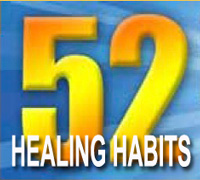
Health Literacy http://farm3.static.flickr.com/2713/
The Philippine literacy rate reported in the United States CIA Factbook appears high at 92.6% for the general population above 15 years old wherein 92.5% are considered literate and 92.7% of Filipinas fit the criteria.
What belies this fact is the way this data was gathered. Apparently, the definition of literacy is simply the ability to read and write.
I have seen mothers apprehensive of writing their name or that of their child in the medical record form simply because they cannot write well. At times they compensate for this shortcoming by scolding their child for not writing very well.
Other patients appear to breeze through the whole consultation process with concealed difficulty illiteracy. But undeniably, after seeing thousands of patients, one can tell from the look in their eyes and expression in their faces. Assistance is readily shared in this case.
The most immediate consequence of illiteracy is poor compliance to medication. Patients who cannot read nor write down notes concerning medication instructions will most likely missed the schedule for taking medications. Worst is to take the wrong medicine, with wrong quantity and wrong route of administration.
To the chagrin of the doctor, they might be wrongly attributed for failing to get the patient to the road to wellness when the problem lies on literacy.
Health literacy, on the other hand, takes the definition of plain literacy to a higher level of cognitive function and social skills. Health literacy is the ability of an individual to understand basic health science built on common health vocabularly and the ability to navigate through the health care system. This basic knowledge is necessary in order to make better informed decision concerning their health.
Many people do not know how the body works and what the medication is for. Understanding any verbal instructions and repeating what is written in the prescription pad can be difficult during the consultation period.
At the onset, the patient is already anxious about the whole consultation process. Hearing about their condition and what is “wrong” in their body can raise their stress level. With anxiety and stress level rising, their ability to listen actively, remember and comprehend what the doctor is saying can be seriously impaired. This may not be obvious to the doctor and the patient may not even notice this.
A key to bridging the gap between the doctor and patient concerning effective interaction is a relax environment where assistance concerning their needs are readily provided with due respect and utmost care.

Stock Knowledge or Stuck Knowledge? http://farm4.static.flickr.com/3636/
An anecdote that one of my mentors often relate to us is the story of a nurse in the “premier” hospital of Bacolod City. The doctor's order states that a bronchodilator medication (intended for patients with difficulty breathing) that was supposed to be delivered as an inhalation through a device was dutifully given by the nurse by mouth.
The medicine that should have gone directly to the lungs after inhaling had to pass through the stomach, absorbed in the intestine, processed by the liver before reaching the lungs.
In the healthcare environment, such as hospitals, medication error happen day in and day out. This occurs for a variety of reasons which we have thoroughly discussed years ago in this column.
The issue on health literacy then is not limited to patients who can barely comprehend the handwriting in a doctor's prescription, to the use of medical jargons and abbreviations that may just be, quite literally, Greek to the patient!
Literacy can be defined as the ability of an individual to read, write, speak English or the native language. It can encompass the capacity to compute at a level that will allow the person to function meaningfully in society and meet its basic demands.
Various takes on the term “literacy” have evolved through the years. Computer literacy now embraces the functional capaciy of people in order to complete social interaction, office work, and creative design through the computer interface.
Health literacy in this sense is specific to the capacity of an individual that is necessary to complete tasks such as reading and comprehending health topics and follow medication instruction.
Getting ideas across from the observation of the physician's clinical eye, to the assimilation of subjective information and objective findings in order to complete a diagnosis, and finally relaying all of it in a palatable format to the lay person is a challenge for most people (including the doctor).
One can hardly find a doctor carrying with him or her materials other than some diagnostic tools in a bag, or sometimes simply a stethoscope in tow, during their hospital rounds. (Ballpens are often amiss.) They would, of course, carry charts---patient medication charts. They don't bring their anatomy, histology, pathology atlases nor shuffe in their bag various tables and graphs.
But how do doctors communicate? During their rounds, doctors often communicate to their patients and their relatives how the treatment is progressing and what new results from available laboratory reports mean verbally/orally. Everything is left to the imagination of the patient and their relatives. Not all patients are creative and artistic. And, quite likely, not every doctor is eloquent, verbose, and descriptive.
If doctors try to sit or lie beside the patient as a lay person and not as a health professional they will find out soon how jaw-dropping their ward performance can be. It can get rather confusing.
With consideration of the level of literacy among Filipinos, comprehending medical data and health forms are beyond the average public reach. To put it as a Negrense expression, all these data make the person's “nose bleed”. That term, by the way, has a scientific equivalent, epistaxis.




 RSS Feed
RSS Feed